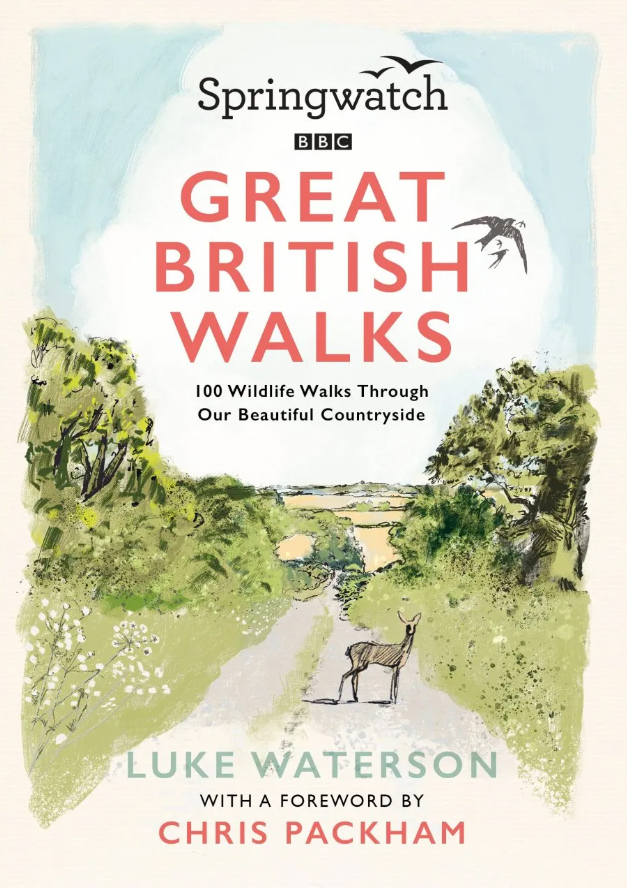Springwatch: Great British Walks
- Great British Walks by Luke Waterson (BBC Books, London, 2023).
- 368 pages; 100 b/w maps, 63 b/w line drawings.
- ISBN: 9781785948183. Pbk, £18.99.
- Buy at BirdGuides bookshop from £18.99
The UK has some spectacular countryside, populated by amazing wildlife. Undoubtedly, the best way to experience this is on foot. Walking, for me, is one of life's great joys, and this book features 100 walks to get you closer to nature. There's a good geographical spread, with all four nations represented. Each walk gets three or four pages dedicated to it, and they're organised by area so you can easily find those nearest to you.
A useful 'Need to know' section starts each walk. This includes such information as start/finish points, distance, relevant OS map and – crucially for a book on wildlife walks – species to look out for.
The walk information and route descriptions are informative and easy to follow. There's enough detail to confidently follow the route. The maps, however, are too small and lacking in detail to be of use. They ideally need to be a full page, which would make the book too unwieldy to carry around.
In this age of smartphones and GPS units it would surely have been simple enough to include QR codes pointing to downloadable GPX files or the Go Jauntly app. The maps could then have been dropped altogether, freeing up space for better information on public transport.
Which takes me to my biggest bugbear. There is a vague nod towards those of us who don't have motorised transport, or maybe don't want to do something environmentally damaging in order to walk in nature. But not much. The rather cryptic "TRANSPORT: Chapel Road bus stop, near Ramsey Heights (buses to Peterborough/Ramsey) – 1.5 km (1 mile) east" from walk 32, Woodwalton Fen, is fairly typical.
But those distances vary widely. A personal favourite is number 61, Kielder Water's Bull Crag Peninsula. The nearest bus stop is a mere 21.75 km away – twice the distance of the actual walk. Even those who drive aren't that well served. Advice for returning to your starting point for several of the linear walks is no more detailed than "bike or car". Presumably that's the car that's conveniently parked back at your starting point or the bike that you carried all that way.
In a similar vein, the majority of walks are described as inaccessible to wheelchairs and pushchairs.
To be fair, this is as much an indictment of the state of our public transport outside of towns and cities as it is a criticism of this book. But it does make many of the walks difficult, if not impossible, to actually do, which is a shame because they all sound lovely.


